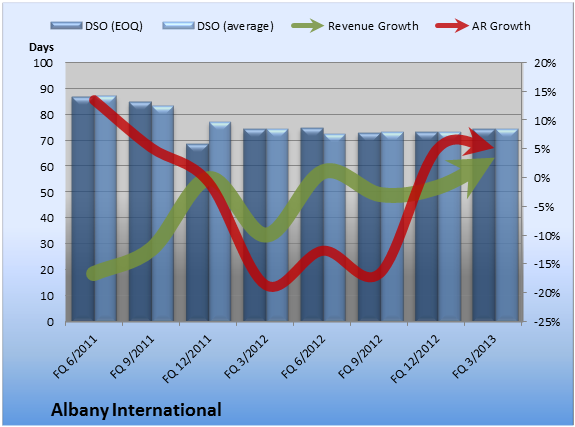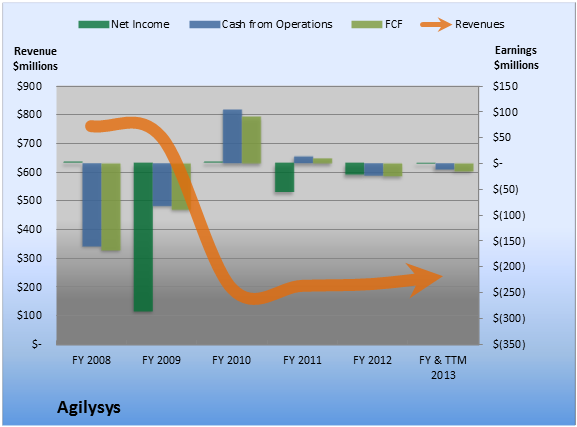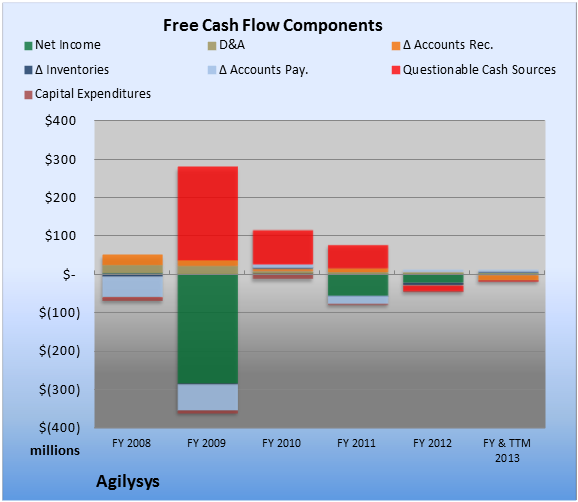NV Energy (NYSE: NVE ) � is a selection for the real-money Inflation-Protected Income Growth portfolio. Like any investment, it needs to be reviewed from time to time to see if it's still worth owning. In the brief video below, portfolio manager Chuck Saletta reviews its valuation, balance sheet, and dividends, and decides whether to hold on to the stock or let it go.
To follow the iPIG portfolio as buy and sell decisions are made, watch Chuck's article feed by clicking here. To join The Motley Fool's free discussion board dedicated to the iPIG portfolio, simply click here.
Will Exelon's troubles soon be over?
As the nation moves increasingly toward clean energy, Exelon is perfectly positioned to capitalize on having the largest nuclear fleet in North America. This strength, combined with an increased focus on balance sheet health and its recent merger with Constellation, places Exelon and its resized dividend on a short list of the top utilities. To determine if Exelon is a good long-term fit for your portfolio, you're invited to check out The Motley Fool's premium research report on the company. Simply click here now for instant access.
Top 10 Clean Energy Stocks To Watch For 2014: Prime Minerals Ltd(PIM.AX)
Prime Minerals Limited engages in the exploration and evaluation of mineral resources. It primarily explores for uranium. The company owns 100% interest in the Lake Mason project consisting of four exploration licenses and the Bolitho Bore uranium prospect. The company operates in Australia, Greenland, Africa, Canada, Bulgaria, and the United States. Prime Minerals Limited is based in West Perth, Australia.
Top 10 Clean Energy Stocks To Watch For 2014: Chicago Rivet & Machine Co.(CVR)
Chicago Rivet & Machine Co. operates in the fastener industry in North America. It operates in two segments, Fasteners and Assembly Equipment. The Fasteners segment involves in the manufacture and sale of rivets, cold-formed fasteners and parts, and screw machine products. The Assembly Equipment segment engages in the manufacture of automatic rivet setting machines, automatic assembly equipment, and parts and tools. The company primarily sells its products to manufactures of automobiles and automotive components. Chicago Rivet & Machine Co. was founded in 1920 and is headquartered in Naperville, Illinois.
Microgen plc, together with its subsidiaries, provides information technology services and solutions to the business community primarily in the financial sector in the United Kingdom, Ireland, and internationally. The company?s Microgen Aptitude Solutions division offers enterprise level application products and solutions to financial and digital media organizations. This division?s products include Microgen Aptitude, an enterprise application platform that is used by enterprises to automate complex business processes, manage dynamic calculations and rules, and integrate data across existing infrastructure; Microgen Accounting Hub, which provides a single point of control for financial and accounting data for wholesale and retail banks, asset and wealth managers, and insurance providers, as well as for the finance function in the telecom, digital media, and commercial sectors; and Microgen DBClarity Developer that offers an approach to graphically design, implement, and control SQL logic. Its Microgen?s Financial Systems provides software products and services for the financial market. It delivers wealth management software and solutions, banking software and solutions, asset management software and solutions, and energy software and application management services. This segment provides solutions for front and back office administration, performance measurement/analytics, and fund and product design to trust administrators, and fund and asset management organizations. The company also offers consultancy, software support, and maintenance services. Microgen plc was founded in 1974 and is headquartered in London, the United Kingdom.
Top 10 Clean Energy Stocks To Watch For 2014: MaxiTRA Industries Ltd (MXI.AX)
MaxiTRANS Industries Limited, together with its subsidiaries, engages in the design, manufacture, sale, service, and repair of transport equipment, and related components and spare parts in Australia. It manufactures various trailer brands, and urethane foam and body panels; supplies and distributes parts; provides service and repair support; and sells and finances new and used trailing equipment. The company�s products include curtain sided trailers, flat top semis, and skeletal trailers; dry freight and temperature controlled vans; steel and aluminum semi tippers, B-doubles, side opening tippers, walking floors, and flat top trailers; rigid truck bodies; brakes, axles, suspensions, and other parts and components; and fiberglass panels, body kits, doors, and insulation foam products. It is also involved in the retail of truck and trailer parts. The company sells its products under the Freighter, Maxi-CUBE, Hamelex White, Lusty EMS, Azmeb, Peki, Colrain, QDS, Maxus, and P anelMasta brand names. It serves transport and logistics, fresh produce, food and beverage, building and construction, agriculture, and natural resources industries. The company was founded in 1946 and is headquartered in Derrimut, Australia.
Top 10 Clean Energy Stocks To Watch For 2014: Proam Exploration Corporation (PMX.V)
ProAm Explorations Corporation engages in the exploration and development of mineral, and oil and natural gas properties in Canada and the United States. It holds interests in the Samuel Lake mineral project, located to the west of the town of Atikokan, Ontario. The company also has working interests in various oil and gas wells located in Pennsylvania, Arkansas, Oklahoma, Ohio, and West Virginia, the United States; and Alberta, Canada. ProAm Explorations Corporation was founded in 1997 and is based in North Vancouver, Canada.
Top 10 Clean Energy Stocks To Watch For 2014: Helen of Troy Limited(HELE)
Helen of Troy Limited, together with its subsidiaries, engages in the design, development, import, marketing, and distribution of brand-name consumer products primarily in the United States and Canada, as well as in Europe, Asia, and Latin America. It operates in three segments: Personal Care, Housewares, and Healthcare/Home Environment. The Personal Care segment offers hair dryers, straighteners, curling irons, hair setters, shavers, mirrors, hot air brushes, home hair clippers and trimmers, paraffin baths, massage cushions, footbaths, body massagers, brushes, combs, hair accessories, liquid and aerosol hair styling products, men?s fragrances, men?s and women?s antiperspirants and deodorants, liquid and bar soaps, shampoos, conditioners, hair treatments, foot powder, body powder, and skin care products. The Housewares segment provides kitchen tools, cutlery, bar and wine accessories, household cleaning tools, food storage containers, tea kettles, trash cans, storage an d organization products, hand tools, gardening tools, kitchen mitts and trivets, barbeque tools, and rechargeable lighting products, as well as baby and toddler care products, including convertible high chair. The Healthcare/Home Environment segment offers humidifiers, de-humidifiers, vaporizers, thermometers, air purifiers, fans, portable heaters, heating pads, and electronic mosquito traps. The company sells its products primarily through mass merchandisers, drugstore chains, warehouse clubs, home improvement stores, catalogs, grocery stores, specialty stores, beauty supply retailers, e-commerce retailers, wholesalers, and various types of distributors, as well as directly online to end user consumers. Helen of Troy Limited was founded in 1968 and is based in Hamilton, Bermuda.
Top 10 Clean Energy Stocks To Watch For 2014: SMURFIT KAPPA GROUP PLC ORD EUR0.001(SKG.L)
Smurfit Kappa Group Plc, together with its subsidiaries, manufactures, distributes, and sells paper-based packaging products in Europe and Latin America. It offers paper and board products comprising containerboards, solid and packaging boards, and specialty boards; base materials graphic and printing products; and packaging intermediates, including pre-printed liners, corrugated boards, sheet feedings, Fanfold, and single face corrugated products. The company also provides packaging products, including boxes, trays, cases, and wraps for fresh food packaging, and food and groceries packaging, as well as for the transport of fast-moving consumer goods; retail ready packaging products, such as shelf ready and promotional packaging products, displays, and merchandising units; bag-in-box packaging products; and primary packaging products for food, non-food, and domestic appliances. In addition, it offers postage and mail order, media and books packaging products, relocation pa ckaging, home storage products, and archive boxes; and industrial packaging products for electronic goods and components, durable goods, furniture, medical products, hazardous goods, and heavy duty goods packaging. The company serves customers in packaging concepts, development and design, supply chain management, and eBusiness solutions fields. Smurfit Kappa Group Plc was founded in 1934 and is headquartered in Dublin, Ireland.
Top 10 Clean Energy Stocks To Watch For 2014: Richelieu Hardware Com Npv (RCH.TO)
Richelieu Hardware Ltd. engages in the manufacture, distribution, and import of specialty hardware and complementary products in North America. The company offers functional cabinet hardware and assembly products, such as traditional and concealed cabinet door hinges, drawer slides, screws, fittings, swivels, lighting products, brackets, and other related cabinet hardware products and specialized tools for manufacturing kitchen cabinets and furniture; and decorative hardware products, including handles, knobs, and mouldings in various finishes and sizes. It also provides high-pressure laminates comprising decorative high-pressure laminates; craft wood veneers; solid surfaces for countertops; decorative tambours; adhesives; and related mouldings and panels in various colors. In addition, the company offers decorative and functional panels, such as particle boards, melamine panels, and medium density fiberboard panels; veneer sheets and edge banding products in wood, melamin e, or polyester, as well as in a range of finishes and sizes; kitchen accessories comprising storage systems, cutlery trays, sinks, Lazy Susans, towel racks, pull-out storage and pantry systems, decorative kitchen accessories, waste bins, and working surfaces; and finishing products, such as lacquers, stains, and varnishes. Further, it provides protection products for hardwood floors; ergonomic workstation components; bulletin boards and scoreboards; and door and window components. The company serves kitchen and bathroom cabinet, furniture, and window and door manufacturers; residential and commercial woodworking industry; and hardware retailers, including renovation product superstores. Richelieu Hardware Ltd. was founded in 1968 and is headquartered in Montreal, Canada.
Top 10 Clean Energy Stocks To Watch For 2014: Mittel(MTTI.MI)
Mittel S.p.A, together with its subsidiaries, provides various financial services in Italy and internationally. It operates in five segments: Operating Finance, Real Estate, Private Equity, Corporate Finance, and Investment Management Advisory. The Operating Finance segment, through Mittel Generale Investimenti S.p.A., provides corporate lending and proprietary trading services. The Real Estate segment, through Mittel Investimenti Immobiliari S.p.A., manages property investments. The Private Equity segment invests in Italian companies through the means of stake acquisitions or closed investment funds. The Investment Management Advisory segment, through ECPI S.r.l., offers various consultancy services, including the production, maintenance, and release of financial indexes, primarily portfolio rating and screening, risk scores, and financial researching. The Corporate Finance segment, through Mittel Corporate Finance S.p.A., offers investment advisory services. The company, formerly known as Mittel ?Societa Industriale Meditarrea S.p.A., was founded in 1895 and is headquartered in Milan, Italy.
Top 10 Clean Energy Stocks To Watch For 2014: Spectris(SXS.L)
Spectris plc designs, develops, and markets productivity-enhancing instrumentation and controls worldwide. It operates in four segments: Materials Analysis, Test and Measurement, In-line Instrumentation, and Industrial Controls. The Materials Analysis segment provides a range of analytical instrumentation and systems for particle and material characterization. These products have applications in pharma/life sciences, metals/mining, semiconductor/electronics, and research industries. The Test and Measurement segment supplies test, measurement, and analysis equipment and software for product design optimization, manufacturing control, and environmental monitoring. The In-line Instrumentation segment provides process analytical measurement, asset monitoring, and on-line controls for primary processing and the converting industries. The Industrial Controls segment supplies automation and control products for the discrete manufacturing industries. The company was formerly known as Fairey Aviation Company Ltd. and changed its name to Spectris plc in May 2001. Spectris plc was founded in 1915 and is based in Egham, the United Kingdom.






